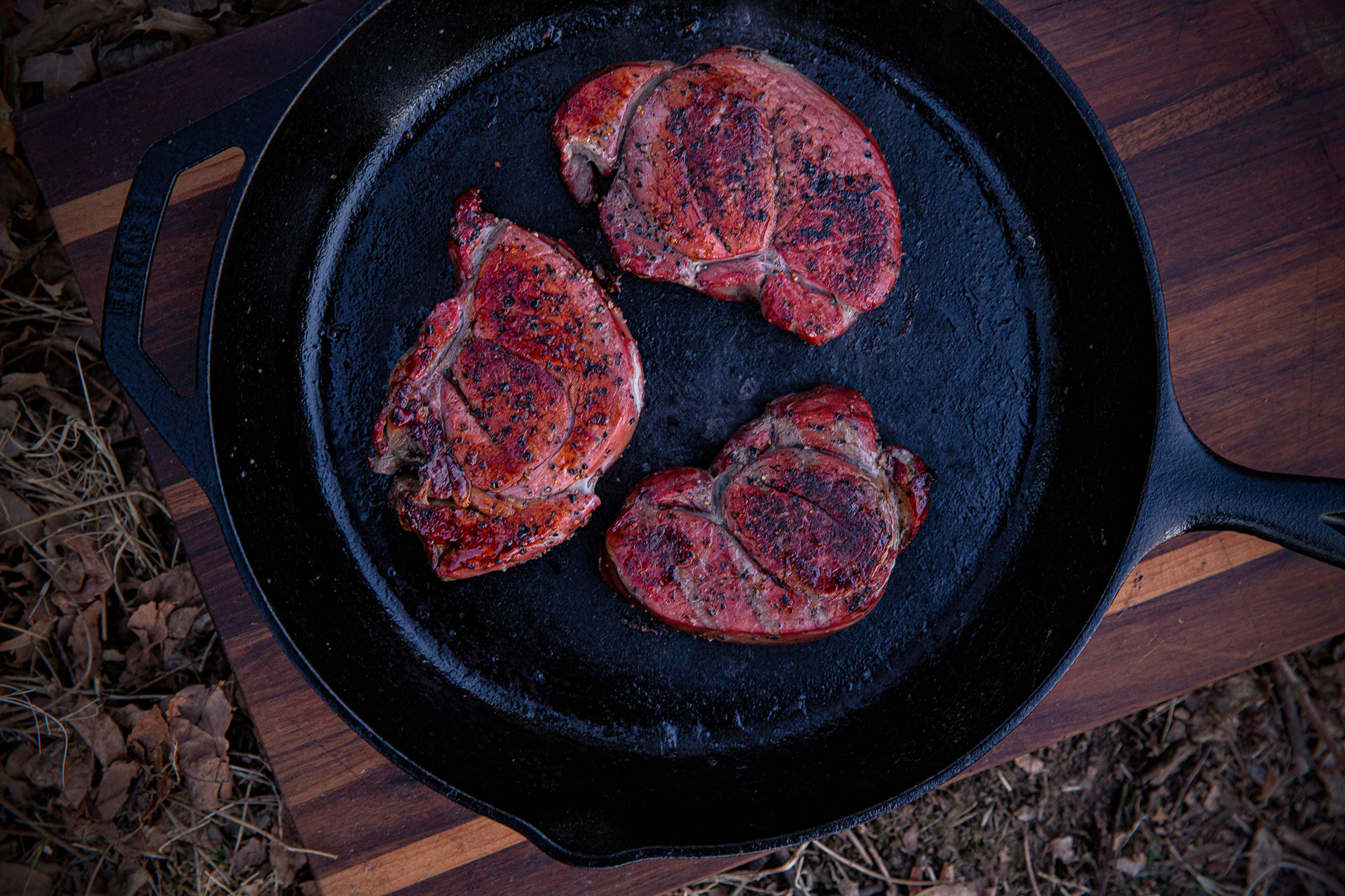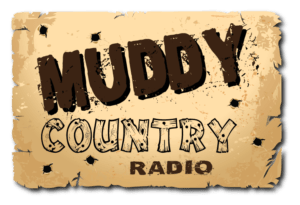
Whether you prefer a grill, smoker, or Crockpot, if you want to learn how to cook venison, internalize this message: Venison is not beef. Everything you need to know about how to cook venison — butchering, proper internal temperature, flavor profiles, everything — comes back to the fact that free-roaming deer and domestic cows are two very different animals. One is chock full of dense, drippy fat that will make the meal taste good under almost any circumstance. The other requires a little more attention to detail.
Luckily, you’ve already proven that details matter to you — you got the deer in your sights, on the ground, butchered and packaged. This part is cake compared to all that.
Experienced wild game chef and Camp Chef public relations manager Brooks Hansen sat down with Outdoor Life to share some tips, techniques, and insight on how to cook venison to the best of your ability. (“Venison” is technically a catch-all phrase for meat from deer, elk, moose, and other cervids. But for the most part, we’re referencing deer meat here.)
“Wild game is not sitting in a pasture, being fed or taken care of and watered. So the meat is a lot more lean,” Hansen says. “[Wild deer] are working harder, and they’re constantly on the move, so they’re going to burn a lot more fat. You have to be a little more careful with what you do, but that doesn’t mean you shy away [from] it, because there’s so much you can do.”
How to Cook Venison: What Equipment Do You Need?
Frying venison in an oil with a high smoke point is a great way to put your cast iron to work. Photograph by Jack Hennessy Jack Hennessy
You can make a good venison dish with little more than a cheap cast iron skillet, some butter or oil, salt and pepper, and a stable heat source. (At least, you can for some cuts. We’ll get into more specifics on that later.) You certainly don’t need a kitchen stocked to Emeril LaGasse’s standards. Luckily, the following tools are probably already in your kitchen:
A saute pan (uncoated steel or aluminum)
If you want to go beyond just the kitchen basics, consider investing in a chest freezer, grill, and a smoker to take your venison storage and prep game to the next level.
How to Cook Different Cuts of Venison
Venison shanks are one of the most underrated cuts. Photograph by Krissie Mason
The meat on a deer’s body can range from cut-with-a-fork-tender to too chewy to bite through. Some of these tougher cuts are best suited to making ground venison or sausage. For this reason, different techniques are best for different cuts, Hansen says.
How to Cook Venison Tenderloins and Backstraps
These cuts of meat are virtually absent of any internal connective tissue or cartilage. They make for very tender portions that are best cooked with high heat for a short period of time and served medium rare, Hansen says. If you normally shy away from steak with a pink-to-red center, Hansen suggests you let your guard down and give a medium-rare venison tenderloin a try. Eating a well-done venison steak is a great way to learn to hate venison, he cautions.
“A medium-rare cut is going to taste better and be a lot more tender,” Hansen says. “It won’t be muttony and gray and chewy.”
Home cooks are more comfortable cooking venison steaks and roasts at lower temperatures than advised. Photograph by Natalie Krebs
When he has the time and opportunity, Hansen prefers a reverse sear. This is a more advanced technique that involves smoking the meat to a low internal temperature before searing it at the end for that signature caramelized exterior that master chefs aim for every time.
“I would season the meat with olive oil, salt, and pepper, or maybe an all-purpose seasoning. Then I’d put it in the smoker on a lower temperature setting with a high smoke, somewhere between 180 degrees and 225 degrees, to put a little smoke flavor on it. I’d run that until I hit an internal temp of around 110 degrees,” Hansen explains. “Then I’d pull it off and sear it in a really hot cast iron skillet with some butter, garlic, rosemary, and thyme. You’re only going to sear it for about a minute to a minute and a half, until it hits an internal temperature of 125 degrees.”
How to Cook Venison Roasts
Most of the large muscles of a deer’s four quarters and neck have varying amounts of connective tissue and cartilage running through them, which means they’re well suited for more of a “low and slow” approach. (Some hind quarter roasts, like the top and bottom rounds, are also great for cutting into steaks.) Slow-cooking in a dutch oven or an electric slow-cooker, like a CrockPot, allows a roast to break down over multiple hours, rendering all that tougher tissue into a more palatable texture.
“With a top or bottom round with a little sinew and other tissues, I’m going to sear it quick in some olive oil to put a crust on it. Then I’m going to toss it in a dutch oven,” Hansen says. “The cool thing about slow-cooking meat is you can add whatever you want. I’ll add some liquid, probably some butter, rosemary, thyme, maybe a bay leaf, and some stock. Beef stock works, or if you make your own stock, use your own. Then I’m going to let it slow cook for a minimum of eight hours. Cooking it in a dutch oven is a little more consistent, but a slow cooker is a lot more convenient.”
How to Cook Venison Shanks, Blade Roasts, and Other Bone-In Cuts
Meat that’s still attached to bone is an especially good candidate for a slow-cooking method. Not only will the connective tissue and cartilage break down, but so will some of the collagen and marrow from the bone itself. Soup is a great option for bones with shaggy pieces of meat still attached. You could also take leftover bones and learn how to make bone broth with them for future soup and sauce bases.
It seems that every wild game foodie’s favorite thing to do with shank meat is make osso buco, a braised dish that breaks down one of the most fibrous cuts of venison from the lower leg. Give OL hunting and optics editor Andrew McKean’s osso buco recipe a try.
How to Cook Ground Venison
The perfect venison burger recipe is an important one to master. Photograph by Natalie Krebs
Ground venison is like the duct tape of meat — you can do just about anything with it. Ground venison works well in burgers, meatballs, meatloafs, sausages, meat sauces, tacos, gravies, pastries, or any other dish that would normally call for ground beef.
Some people like to add pork fat to their ground venison to give it some stickiness, while others prefer to keep it pure. If you add fat, you won’t see much difference in the consistency between your ground venison and a package of ground beef from the grocery store, so you won’t need to adjust you ground venison recipes much. If you don’t add fat, but want to make the ultimate venison burger, be prepared to hand-form your patties and take a little extra care on the grill or in the skillet. If you’re really worried about your venison falling apart, you can mix in one well-beaten egg per pound of meat to get a little more bind without adding any significant flavor from a different meat source. Or, if you’ve had bad luck with grilling venison burgers in the past, stick to the cast iron skillet, something OL executive editor Natalie Krebs recommends in her venison burger recipe. That way you don’t have to wait for grilling weather, either.
How to Cook Venison: Our Favorite Venison Recipes
Bulgur wheat and Greek tomato sauce give these meatballs a twist. Photograph by Holly Heyser
We’ve cooked and published a lot of venison recipes over the years here at OL. That’s why we compiled a list of our favorites from some of the best wild game chefs in the nation — and a few OL editors who’ve been around the cast iron skillet a time or two. Check out these unique preparations for a variety of different cuts, challenge levels, and flavors.
Venison Tenderloin and Backstrap Recipes
Beka Garris’ French Onion Venison Steaks
Jamie Carlson’s Tenderloin Yaki Udon
Jenny Nguyen-Wheatley’s Vietnamese Shaking Venison
Katie Hill’s Harissa Lime Marinade
Michael Pendley’s Venison Tenderloin Milanese
Wade Truong’s Sous Vide Herb-Crusted Venison Chops
Venison Roast, Shank, and Bone-In Recipes
Cosmo Genova’s Venison Tamales
Derek Horner’s Shredded Venison Blade Roast
Jamie Carlson’s Pepper Steak Stir Fry
Jamie Carlson’s Osso Bucco and Gremolata
Jamie Carlson’s Smoked Venison Ham
Krissie Mason’s Smoked Venison Poutine
Lance Lewis’ Tuscan Venison Neck/Shank with White Bean Ragu
Maggie Hudlow’s Venison Carne Asada
Sean Sherman’s Venison Stew with Hominy
Ground Venison Recipes
Hank Shaw’s Venison Greek Meatball Recipe
Jack Hennessy’s Ultimate Venison Burger
Jamie Carlson’s Ground Venison and Wild Mushroom Egg Rolls
Natalie Krebs’ Perfect Venison Burgers
How to Cook Venison: FAQs
A rib roast is a good recipe to try for a more intricate cut of meat. Photograph by Wade Truong
You might read in some places that venison is best soaked in milk before cooking to remove any gamey flavors. If you want that natural taste to disappear, then you can certainly try soaking the meat. But if you prefer the flavor, which reminds you that the animal wasn’t raised in a pen, then it’s perfectly safe (and encouraged) to not soak venison before cooking.
A lot of different seasonings and flavors work well with venison. For a tenderloin or backstrap on the grill, salt and pepper are a great start. Sage, thyme, and rosemary are great as well. Experiment with different spice blends and determine which are your favorites. Truthfully, it’s pretty hard to make a venison dish that’s cooked properly taste bad.
The proper temperature to cook venison is a source of debate. According to the wild game chefs and hunters, it is absolutely okay to eat a rare steak. According to the federal government, not so much. But cooking whole muscle cuts to a rare internal temperature is unlikely to make you sick, since the interior of the meat has yet to be exposed to air or bacteria, so it’s in a pure form when you slice into it for the first time. Ground venison is a slightly different story, especially if you added some fat to your grind. Cook your burgers medium or medium-well if you’re concerned about bacteria, which can flourish easier in the high-surface-area meat mixture.
Final Thoughts on How to Cook Venison
For so many deer hunters, the delicious meals that come after a successful fall season constitute much of their “why.” Learning how to cook venison properly takes some time and effort, but it’s worth it after all you’ve put into the harvest so far. Many hunters also consider it the best way to honor the animal’s life. For these reasons, it’s worth experimenting with new recipes and learning about the different cuts so you can make the most of your venison stash.
The post How to Cook Venison appeared first on Outdoor Life.
Giant, 888-Pound Tuna Is the Largest Ever Caught off Florida Coast
Six anglers fishing aboard the Flat Dangerous, an 80-foot Viking based in Destin, Florida, lucked into a ferocious bite on Wednesday from an 888-pound bluefin tuna. With fish boiling on the surface all around them, the crew hooked and landed what was quickly recognized as the largest bluefin ever recorded [...]| Play | Cover | Release Label |
Track Title Track Authors |
|---|
